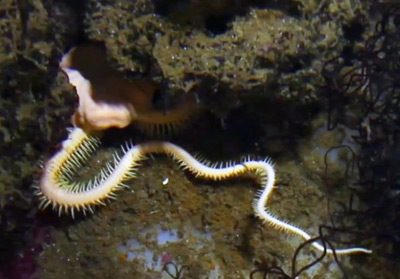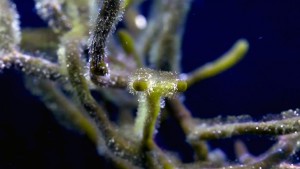A refugium is a safe haven for algae and invertebrates in a separate tank from the main display aquarium. These organisms provide some distinct advantages to the overall health of a reef aquarium. First off, the critters breeding in the refugium occasionally make their way back to the display and offer healthy snacks for many of the fish and corals. Second, the critters and algae in the refugium help stabilize water chemistry and process nutrients.
These benefits are not possible when there is too much predation on microfauna and algae—as is typically the case in a display tank. For example, the tangs and other herbivorous fish that are popular in reef aquariums make short work of macroalgae. Also, fish such as damsels, mandarins, and wrasses like to constantly pick off tiny copepods and smaller planktonic life. Over time, the beneficial algae and critters would just disappear.
Beneficial invertebrates
Beneficial inverts that proliferate in refugiums include a mix of various amphipods, copepods, mysis shrimp, mini brittle stars, and worms, which include bristleworms, feather dusters, and spaghetti worms. These inverts are detritivores. They consume uneaten food and waste from the main tank. In doing so, they break down waste and convert it to biomass, thus making it unavailable to undesirable things like cyanobacteria.

Also, as I mentioned, a small fraction of these inverts make their way back to the display tank where they become healthy snacks for fish. Many of the fish that are popular in reef aquariums forage for food constantly and are ill served by a once-per-day feeding regimen. A large refugium constantly supplying a food source greatly helps in this regard. Some of the healthiest animals I have ever seen came from massive systems where the tank itself was able to keep up with the feeding activity of fish. However, not everyone has the space for a giant system with only a couple fish in it.
Macroalgae
Macroalgae, which are commonly grown in refugiums, help clean the water by binding up nitrates, phosphates, and heavy metals. Periodically harvesting the algae from the system effectively removes these compounds. There are even entire filtration systems designed around the water-cleansing properties of algae.
Most of the time, reef hobbyists focus on the most productive algae—those that are fast-growing and bind nutrients best—for filtering their systems. Some argue that the most productive are turf algae. Turf algae are relatively uncommon in the hobby and require a flow-heavy environment for best growth. A type of filter called an algal turf scrubber, or ATS, was made to grow and harvest turf algae; however, not many hobbyists use them.
Second to turf algae, the most popular alga used for filtration purposes is Chaetomorpha. It is a stringy, green alga that grows in dense clusters.
Reverse-daylight photoperiod
A typical reef tank’s pH fluctuates throughout the day as a function of photosynthetic activity. At night, the pH tends to dip compared to the day. A reverse-daylight photoperiod—in which the refugium is lit while the main tank is dark and vice versa—helps stabilizes tank pH. By doing this, the refugium’s algae resume photosynthesis where the main tank stops and, thus, balance out the pH. Furthermore, stabilizing pH helps the system maintain other chemical parameters.



